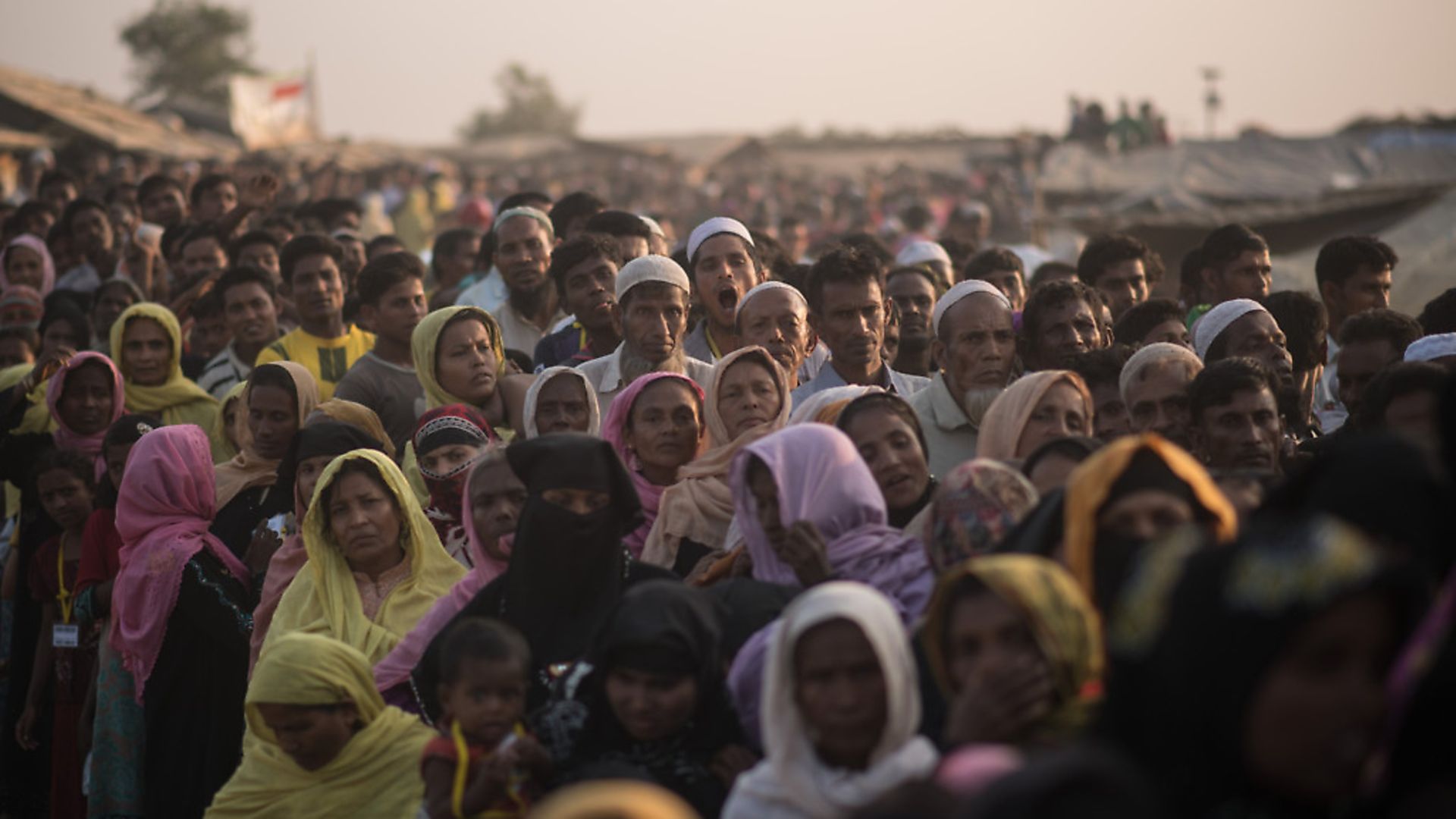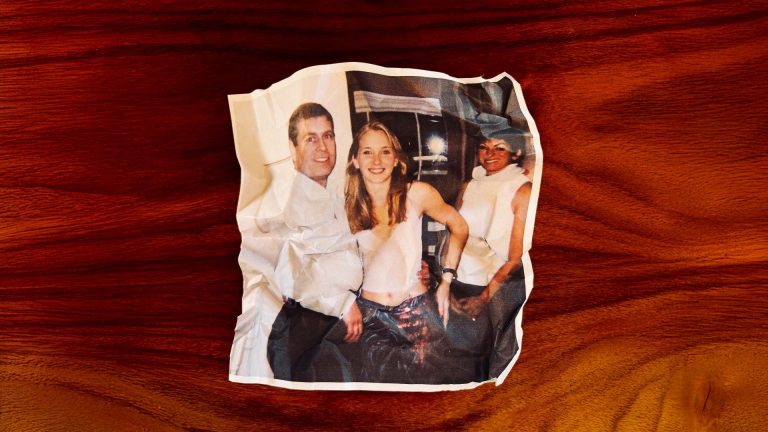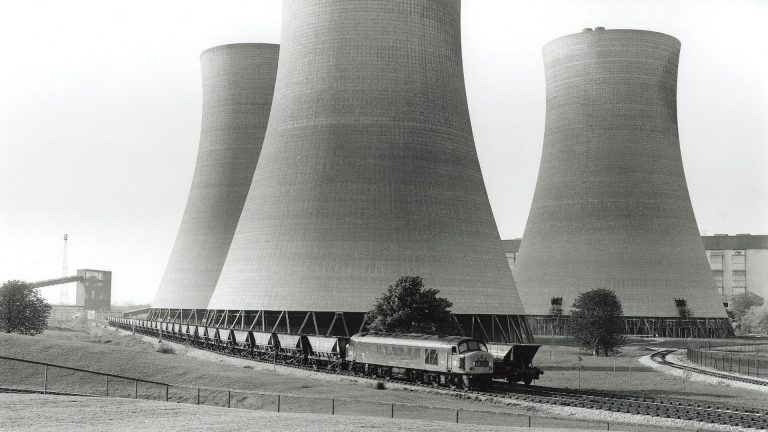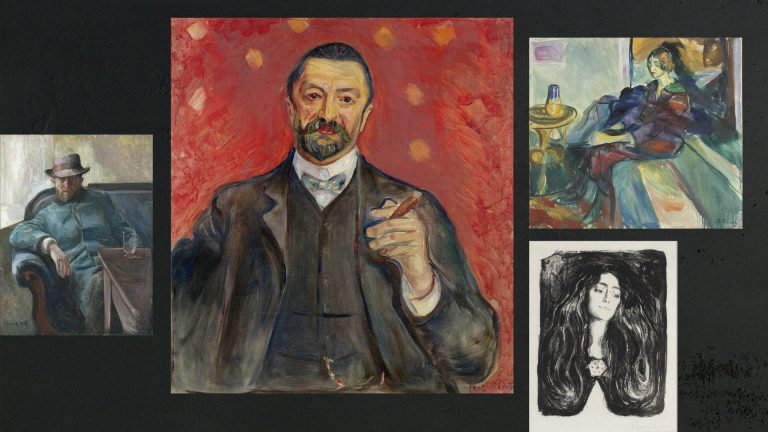
In the week Pope Francis met Aung San Suu Kyi, WILL WORLEY speaks to Zahid Hussein at a camp in Bangladesh for Rohingya refugees after he was forced to watch as his village destroyed by Burmese security forces.
‘Of course I have nightmares,’ says Zahid Hussein. ‘It’s constantly in my mind. When it gets too much I lie down and try to go to sleep and forget.
‘But now I want to go back to Tula Toli, and take pictures of the burned houses and dead bodies, so the world knows what happened to us.’
Hussein, 22, is one of more than half a million Rohingya refugees who have crossed into Bangladesh since late August. He now lives in the swampy Thaing Khali camp, next to a large pond of stagnant water. Practically all of the refugees have desperate tales of death and destruction at the hands of the Burmese security forces in the country’s western Rakhine state.
But of all the stories in the camp, among the worst come from one village: Tula Toli in Maungdaw township. The testimony of the survivors from there go beyond mere violence and give a glimpse of mankind’s cruelty at its most extreme.
Tula Toli was home to around 4,000 Muslim Rohingya and 400 Buddhist ethnic Rakhine, Hussein says. His family lived there for generations, but he says his people were oppressed for years, facing arbitrary arrest, beatings and extortion at the hands of police and local Rakhine officials.
Hussein says he was once arrested for having a light on in his house after 10pm and forced to pay a 500,000 kyat (£274) fine. Amnesty International recently released a landmark report declaring Rohingya people have been forced to live in ‘apartheid’ conditions in Rakhine.
But the situation became worse in August this year, when tensions in the region escalated and the presence of security forces increased. Violence by the militant Arakan Rohingya Salvation Army (ARSA), and in particular its attack on security forces outposts on August 25, has been blamed for the ensuing ‘clearance operations’ which have seen the majority of Burmese Rohingya flee the country.
In the week before the massacre, Hussein says he and other villagers heard the sounds of firing from security forces encamped nearby, making them nervous. Many moved to an area of the village near the river, but the men went back and forth to the village, checking on the situation and their livestock. (Hussein did not mention the peace agreement that other survivors have given accounts of.)
A day before the attack on Tula Toli, helicopters landed at Boli Bazar, around two kilometres away, Hussein says, and some homes were set on fire there. The next to be burned was Dual Toli, Hussein adds, across the river that snakes around Tula Toli. The villagers looked on helplessly, and afterwards around 200 soldiers flew in by helicopter and stayed in a nearby Rakhine settlement.
Terrified, the Rohingya villagers contacted the village chairman, a man Hussein and members of his family named as Aung Kyaw Sing. He has also been named frequently by other Tula Toli survivors. Sing, an ethnic Rakhine, is alleged to have had a track record of threatening and extorting villagers throughout his tenure, but there was no one else they could turn to with the military so close by.
The night before the attack, Sing is alleged by Hussein to have told the villagers: ‘Don’t move, stay at home, and I’ll tell you if the military are coming.’ Other accounts have alleged Sing said he would warn them if the soldiers were going to attack.
‘Some people didn’t trust him, and escaped’ Hussein says. ‘Others said, ‘we must stay”.
Around 8am on August 30, Hussein was going to check on his house when he saw the military enter the town and begin shooting people and setting fire to the houses of the Rohingya.
‘I ran like the wind,’ he says, explaining that he hid in a paddy field. The soldiers, meanwhile, flushed the villagers towards the riverbank. Some tried to run, and were shot, and others tried to swim across the river, where around half a kilometre away there is a village called Haw Khang.
Hussein says after some time he was able to leave the paddy field and was able to swim across the river. ‘From the other side of the river, I could see everything clearly,’ Hussein says, moving his body into a kneeling position, bending his head forward, and placing his hands behind his back. ‘All the men were arranged in lines, with their heads down, and shot dead,’ he says. ‘If they were not dead, the soldiers used a knife to cut their throat,’ he adds, drawing his hand across his neck.
He goes on: ‘The women and children watched as the men were killed. After the men, they began killing the children and babies by throwing them into the river.
‘They didn’t use a bullet for the children, but they snatched them from their mothers arms.’
Other accounts given by other Tula Toli survivors have made similar allegations of infanticide at the hands of the Burmese military.
Hussein continues: ‘After killing the men and the children, they dug three or four big holes. They pulled the bodies in. They threw in all the bags, luggage and clothes people had brought with them from their houses.
‘They put the bodies in first, then used the clothing [as accelerant] and poured on petrol and set fire to it.
‘I could see the people and I was just crying and crying and crying.’
At around 2pm, Hussein says he saw up to five women taken away by soldiers to houses about a 15 minute walk away. He says they entered the house and later the soldiers left and the houses were burned.
Other accounts have suggested more women were taken away and subjected to sexual violence before the houses were set on fire. Hussein did not see what happened himself but heard from survivors the women were raped.
During the orgy of killing, Hussein says he saw women and children hidden in a paddy field away from the location of the soldiers, and swam back to help them across, passing many dead bodies in the river. ‘It was very sad for me, so I just tried to think about how to save the people who were waiting to cross to the other side,’ he says.
On his Chinese-made mobile phone, Hussein has footage – used in a BBC Newsnight report on the massacre – he says was filmed by his friend, Mohammed Ayoub, 20. One video shows people swimming across the river as Tula Toli burns in the background, and another shows dead babies being pulled from the water, one with severe head injuries. Hussein maintains he was standing with Ayoub when he shot the video and saw all the horrific things on it with his own eyes. ‘I think more than 1,600 people were killed,’ says Hussein. ‘I lost seven members of my family: My cousin, Laila Begum (35), my niece Nur Halima (12), my nephew Saibullah (10), my nieces Shahida Begum (8) and Nur Harsa (6) and my nephew Zahidur Rahaman (3).’
He did not elaborate on how they died. He lost Ayoub as he looked after his remaining family members on the three-day journey to Bangladesh. There is no way to verify the accounts of survivors of Tula Toli, as the Burmese government has denied investigators and journalists access to the region. But satellite imagery has confirmed the extensive burning of buildings in Tula Toli.
Last week US Secretary of State Rex Tillerson officially declared ‘ethnic cleansing’ and ‘horrendous atrocities’ were taking place in Burma. The UN has said the allegations of sexual violence against Rohingya women could constitute war crimes. But the Burmese military has cleared itself of any wrongdoing in an internal investigation, and claimed Rohingya villagers set fire to their own homes.
Meanwhile, Bangladesh and Burma have come to an agreement on the return of Rohingya refugees. But how their safe return to their homes can be guaranteed is unclear, especially as the arbiters of law and order – the military, police and local government officials – are believed to have led or participated in the attacks.
‘We want justice,’ says Hussein. ‘We came here [Bangladesh] to save our lives. The government killed many of our Rohingya nation. If we go without justice the suffering will continue.’
Will Worley is a freelance journalist interested in foreign affairs. He can be found on Twitter @willrworley






